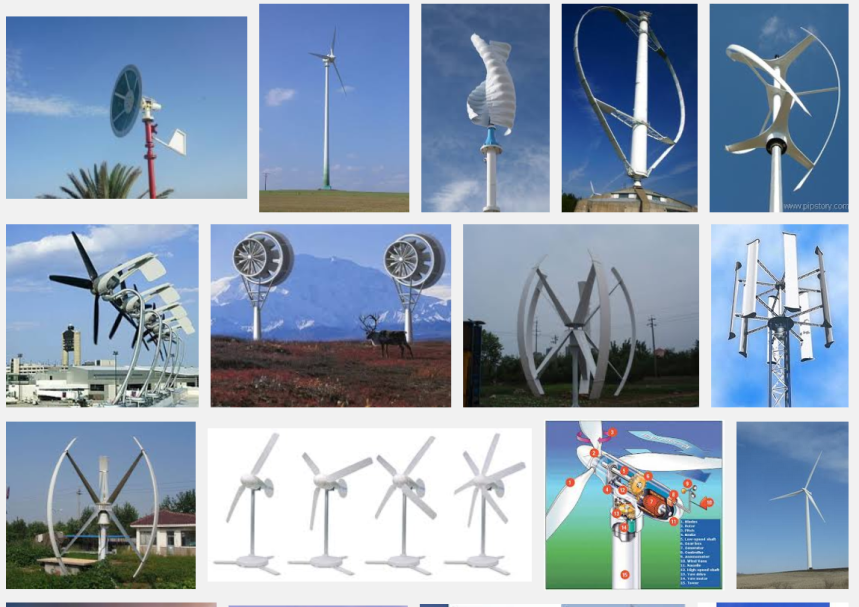How Do Wind Turbines Work?
Wind turbines operate on a simple principle. The energy in the wind turns two or three propeller-like blades around a rotor. The rotor is connected to the main shaft, which spins a generator to create electricity.
So how do wind turbines make electricity? Simply stated, a wind turbine works the opposite of a fan. Instead of using electricity to make wind, like a fan, wind turbines use wind to make electricity. The wind turns the blades, which spin a shaft, which connects to a generator and makes electricity. View the wind turbine animation to see how a wind turbine works or take a look inside.
Wind is a form of solar energy and is a result of the uneven heating of the atmosphere by the sun, the irregularities of the earth’s surface, and the rotation of the earth. Wind flow patterns and speeds vary greatly across the United States and are modified by bodies of water, vegetation, and differences in terrain. Humans use this wind flow, or motion energy, for many purposes: sailing, flying a kite, and even generating electricity.
The terms wind energy or wind power describe the process by which the wind is used to generate mechanical power or electricity. Wind turbines convert the kinetic energy in the wind into mechanical power. This mechanical power can be used for specific tasks (such as grinding grain or pumping water) or a generator can convert this mechanical power into electricity.
TYPES OF WIND TURBINES
Modern wind turbines fall into two basic groups: the horizontal-axis variety, and the vertical-axis design, like the eggbeater-style Darrieus model named after its French inventor. Horizontal-axis wind turbines typically either have two or three blades. These three-bladed wind turbines are operated “upwind,” with the blades facing into the wind.
Wind turbines can be built on land or offshore in large bodies of water like oceans and lakes. The U.S. Department of Energy is funding efforts that will make innovative offshore wind technology available in U.S. waters.

SIZES OF WIND TURBINES
Utility-scale turbines range in size from 100 kilowatts to as large as several megawatts. Larger wind turbines are more cost effective and are grouped together into wind farms, which provide bulk power to the electrical grid.
Offshore wind turbines are larger, can generate more power, and do not have the same transportation challenges of land-based wind installations, as the large components can be transported on ships instead of on roads.
Single small turbines below 100 kilowatts are used for homes, telecommunications dishes, or water pumping. Small turbines are sometimes used in connection with diesel generators, batteries, and photovoltaic systems. These systems are called hybrid wind systems and are typically used in remote, off-grid locations where a connection to the utility grid is not available.

